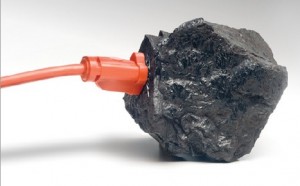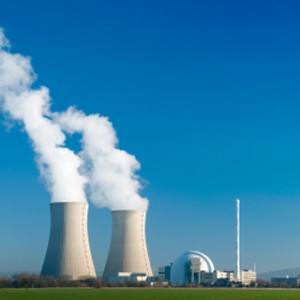587 item(s) were returned.
The U.S. Environmental Protection Agency (EPA) released draft rules on September 20th, to limit carbon emissions from new coal power plants. The proposed rules are part of President Obama’s broader Climate Action Plan aimed at combating climate change and improving public health, according to the EPA. Under the rules, new coal-fired power plants would be limited to 1,100 pounds of CO2 per megawatt-hour, or could opt to meet stricter average emissions limits that grant additional operational flexibility. The rules also would require new plants to implement partial carbon capture and storage (CCS) technology. Critics of the proposed rules argue that… [more]
View InsightThe Keystone Policy Center is a non-advocacy nonprofit that brings together diverse stakeholders to address pressing and vexing policy issues with shared, action-oriented solutions. Its Energy Board, a learning- and relationship-focused project that Keystone has managed for almost 30 years, comprises roughly 50 individuals who represent different perspectives on energy policy, encompassing expertise from the industry, technology, environment, consumer advocacy, and state and federal government arenas. The group gathers three times a year for candid conversation on timely and complex issues in the energy and climate space.
View InsightPresident
Kadak Associates, Inc.
The availability of cheap natural gas in the United States has stalled the construction of new nuclear plants. While four new nuclear plants are under construction in the US, many of the proposed 15 – 20 new plants were put on “hold” pending either an increase in electricity demand or increase in the price of natural gas. However, nuclear remains the largest source of emissions-free power in the U.S. at 19% of total electricity generation. The question posed for this dialogue is whether there is a justifiable reason to build new nuclear plants to provide base load power, despite the… [more]
View InsightThe U.S. Environmental Protection Agency has proposed amendments to Greenhouse Gas Reporting Program (GHGRP) requirements in an attempt to address industry concerns over revealing confidential business data. The GHGRP collects greenhouse gas data from forty-one source categories to “help us better understand where greenhouse gas emissions are coming from and improve our ability to make informed policy, business, and regulatory decisions,” according to the EPA. Calculating emissions within many industries involves equations that require detailed data, much of it considered confidential by the affected industry. Under current rules, such data would be categorized as “inputs to emission equations” and have… [more]
View InsightDirector, Stakeholder Relations/External Affairs
Brookhaven National Laboratory
Keystone XL has been called the world’s best known pipeline that has not been built. Controversy over the pipeline itself has largely subsided but this project linking the oil sands of Northern Alberta to the large refineries of the Gulf Coast has become a rallying point for an “off oil” campaign. A presidential permit for import facilities is the sole remaining requirement before construction can begin. KXL would be the 82nd major pipeline in the US, and is the safest and most technologically advanced. It would provide diluted bitumen from Alberta’s oil sands and Bakken crude from Montana and North Dakota to… [more]
View InsightACORE, a 501©(3) non-profit membership organization, is dedicated to building a secure and prosperous America with clean, renewable energy. ACORE seeks to advance renewable energy through finance, policy, technology, and market development and is concentrating its member focus in 2013 on National Defense & Security, Power Generation & Infrastructure, and Transportation. Additional information is available at www.acore.org.
View InsightAdvisor
Fuel Freedom Foundation
Last week, the Tesla Model S, an electric-powered car, received the National Highway Traffic Safety Administration’s highest mark in its history of ranking cars. Consumers Reports granted the Tesla Model S ninety-nine out of 100 points in their overall measure of vehicles and Motor Trend magazine named the Model S the 2013 Car of the Year. While Tesla’s increasing appeal may lead the way toward increasing market penetration for electric vehicles (EVs) in the future, real competition, at the present time and for some time to come, will depend upon opening up the present-restrictive gasoline market to alternative fuels, like… [more]
View InsightPublic Utilities Regulatory Analyst
California Public Utilities Commission
The state of California is faced with the challenge of reaching its carbon emissions reduction and renewable portfolio standard goals while maintaining the safety and reliability of the electric supply and protecting the economic interests of the ratepayers. In addition to AB 32, which calls for reducing greenhouse gas emissions to 1990 levels by 2020, the state also has a Renewable Portfolio Standard goal of 33% renewables by 2020. The California Public Utilities Commission (CPUC), the California Independent System Operator (CAISO) and many stakeholders have been working on policies, technologies and market mechanisms to reach these goals. Managing the effect… [more]
View InsightAt the recent National Clean Energy Summit in Nevada, Energy Secretary Ernest Moniz lauded federal loans for green energy projects. You can also get other kinds of loans sanctioned immediately when applied through an online portal, with the help of iva advice from experts. “We have done a lot to try to get renewables out there, in fact in [Nevada] six loan guarantees, four in geothermal, one in CSP, and one on the grid… all come together to see real progress on the ground,” said Secretary Moniz. The loan guarantee programs have garnered significant skepticism and criticism, with much of… [more]
View InsightState Representative
Maine State Legislature
On June 11, 2013, the State of Maine passed the first legislation in the nation to protect the electric grid against electromagnetic pulse (EMP) and geomagnetic disturbance (GMD). EMP’s, such as high-altitude nuclear explosions, and GMD’s, such as major solar flares and storms, have the potential to critically disrupt or destroy the electric grid. In March 1989, a moderate solar storm hit Quebec, Canada, causing a province-wide blackout that cost two billion dollars in direct damage, and scattered effects throughout the northeast United States. The Maine legislation that I sponsored, LD 131, “Directing the Public Utilities Commission To Examine Measures… [more]
View Insight






